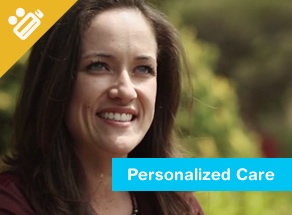Fitness
Breaking Bad Habits: Changing the Way Hispanics Eat, Move, Live
25/09/2015 12:00pm | 35096 viewsIn 2007, we began planning and developing a new program called Eat Move Live in collaboration with the City of Duarte and the Parks & Recreation Dept. We started the program because we – under the aegis of Dr. Kimlin Tam Ashing, Ph.D., our Director at CCARE – recognized a need in our catchment area and a corresponding opportunity to reach out to the community to help reduce obesity rates and deal with related chronic diseases, especially cancer and diabetes. Our mission was to become a trusted source of information for this underserved population, a place where they could find the resources they needed and medical professionals they could talk to and turn to for help.
Fitness
Yoga Can Be a Path to Health and Well-Being for the Hispanic Community
18/09/2015 12:00pm | 30129 viewsI walked into my first Kundalini yoga class about 15 years ago. I had done other forms of yoga before but none had prepared me for the experience of Kundalini. I was soothed by the beautiful music that played, known as mantras, and the chanting all around me. “Let the nervous system adjust,” I heard, and obediently my body vibrated as if it knew how to do the adjustments naturally. We meditated to the healing sounds of mantras and as we laid down to rest the powerful sounds of the gong took me to a place that I had forgotten, where peace, gratitude, and the feeling of well-being are found. In 2006, I graduated as a Kundalini Yoga and Meditation Teacher from Golden Bridge Yoga, a studio in Los Angeles. Though there are many branches of yoga, the right branch will find the student according to their path.
Nutrition
Carbohydrates — Part Of A Healthful Diabetes Diet
14/09/2015 03:27pm | 7706 viewsA common nutrition myth is that individuals with diabetes need to avoid carbohydrates. While individuals with diabetes must be mindful of how much carbohydrates they eat, they don't need to avoid it altogether. Carbohydrates are the body's main source of fuel and are necessary to maintain proper cellular function. The type of carbohydrates and portion size are what matter most.
Fitness
Hourly 2-Minute Walking Sessions Can Lead To Better Health Outcomes, Longer Lives
03/09/2015 06:00am | 7276 viewsThe University of Utah School of Medicine released new research that indicates workers who participate in light intensity activities, such as hourly, two-minute walking sessions, will likely have better health outcomes and longer lives than their sedentary counterparts.
Preventive Care
How to Be Your Own Health Advocate
28/08/2015 12:23pm | 9321 viewsTime yourself as you get ready for bed tonight—including how long it takes to change into your pajamas, wash your face, brush your teeth, etc. Statistics indicate that the time you spend as part of your nightly routine might be longer than your next visit to the physician. Specifically, a study in 2013 revealed that newer physicians spend an average of eight minutes with a patient. Perhaps you can attest to this reality, and have experienced the feeling of just walking into a physician’s office when the visit is already over.





